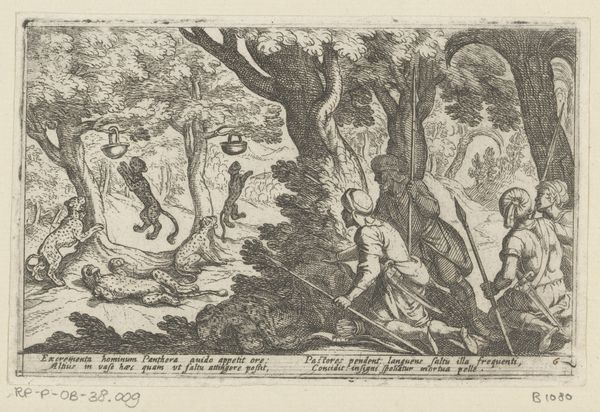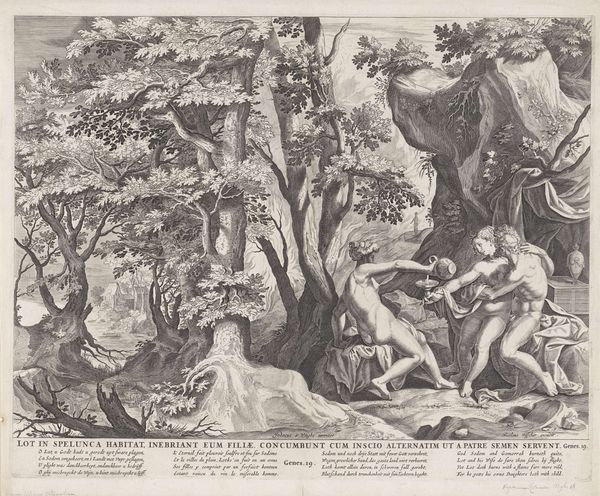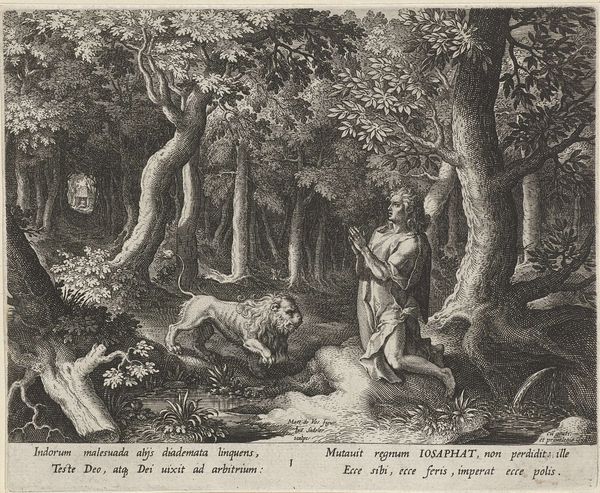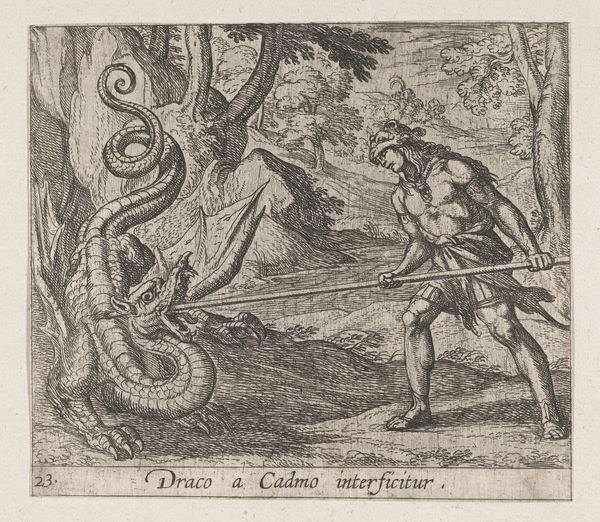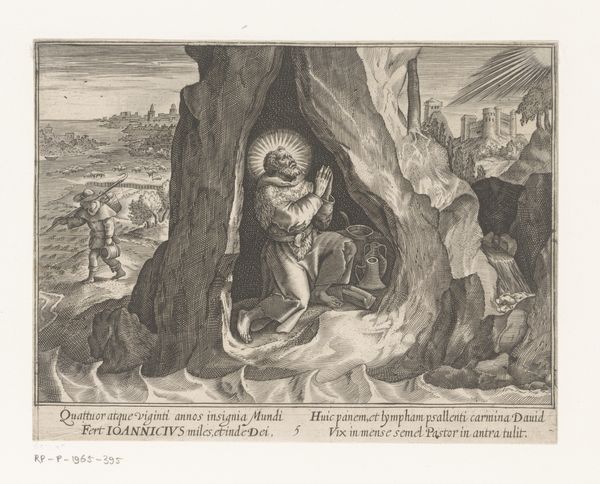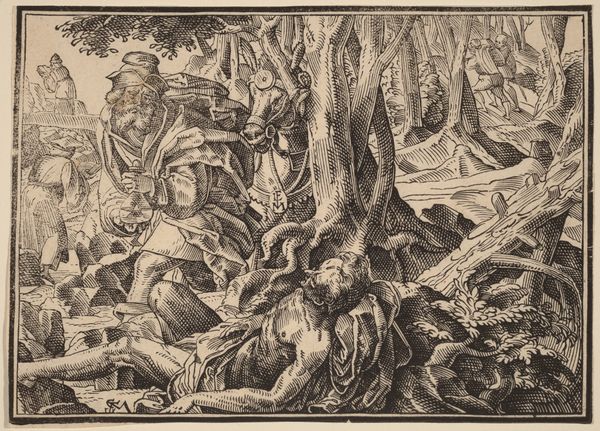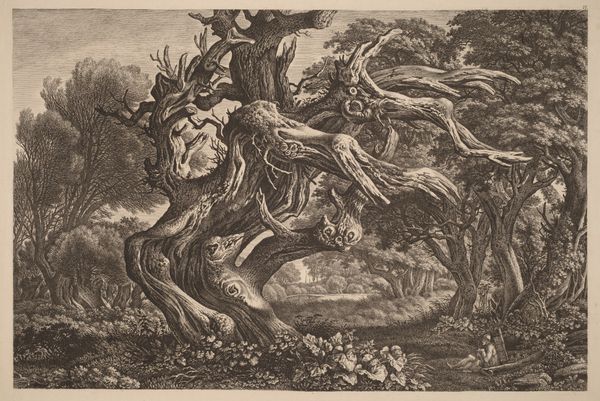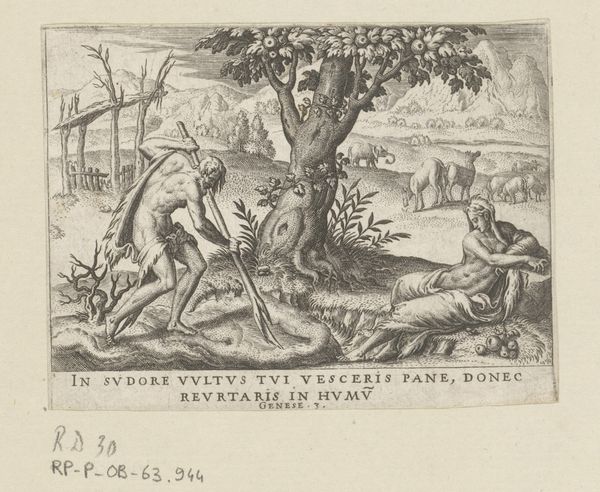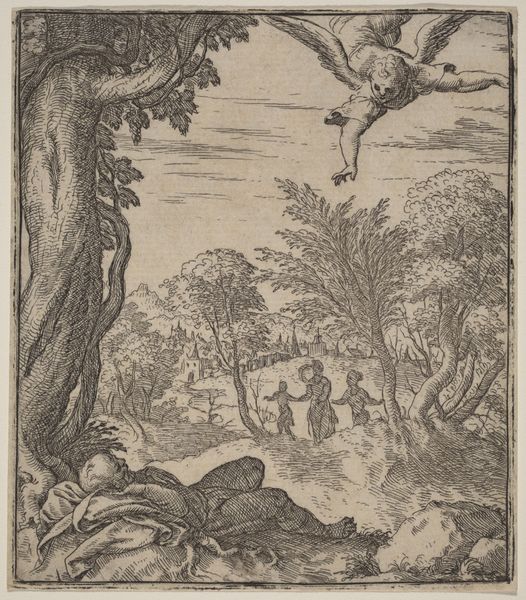
Plate 22: Cadmus's Men Killed by the Serpent (Draco Martius Cadmi socios depascit), from Ovid's 'Metamorphoses' 1606
0:00
0:00
drawing, print, engraving
#
drawing
#
narrative-art
#
baroque
#
pen drawing
# print
#
death
#
landscape
#
figuration
#
men
#
line
#
history-painting
#
engraving
Dimensions: sheet: 15 3/16 x 20 1/2 in. (38.5 x 52 cm) plate: 4 1/8 x 4 3/4 in. (10.5 x 12 cm)
Copyright: Public Domain
Editor: This is “Plate 22: Cadmus’s Men Killed by the Serpent” by Antonio Tempesta, created in 1606. It's an engraving, depicting quite a gruesome scene! What I notice immediately is the chaotic energy; figures strewn about, a giant serpent, and others fleeing in terror. What’s your take on this artwork? Curator: It’s definitely a dramatic scene, isn’t it? Looking at this through a historical lens, we have to consider the enduring power of Ovid’s *Metamorphoses*. Artists returned to it again and again, and Tempesta is choosing a particularly violent moment to depict. Consider what that might say about the tastes, or even the anxieties, of his intended audience? What's being said by showcasing death and fear? Editor: So, it's not just a straightforward illustration. It reflects the period's interest in spectacle, even of violence. Does the setting – the landscape – play a role here? Curator: Absolutely. Landscape in Baroque art often isn't just a backdrop; it's an active participant. The dense forest creates a sense of enclosure, amplifying the vulnerability of Cadmus’s men. Note also the composition: your eye is drawn directly into the serpent feeding! Tempesta wants us to *see* this act. Editor: That's a chilling thought. So, this engraving is meant to provoke a strong emotional reaction? To make the viewer complicit, in some way, in this gruesome event? Curator: Precisely! Baroque art is all about eliciting an emotional response, and Tempesta skillfully employs the visual tools at his disposal to ensure that. The politics of imagery at the time involved power, authority, and these biblical themes played perfectly into those narratives. Editor: This gives me a lot to consider! I hadn’t thought about how the landscape itself is not only an aesthetic consideration but actually intensifies the narrative. Curator: And it’s important to consider what's *not* being shown as well, the choice to represent violence helps in a larger discussion of power, authority and judgement. I never would have thought of that starting out.
Comments
No comments
Be the first to comment and join the conversation on the ultimate creative platform.
